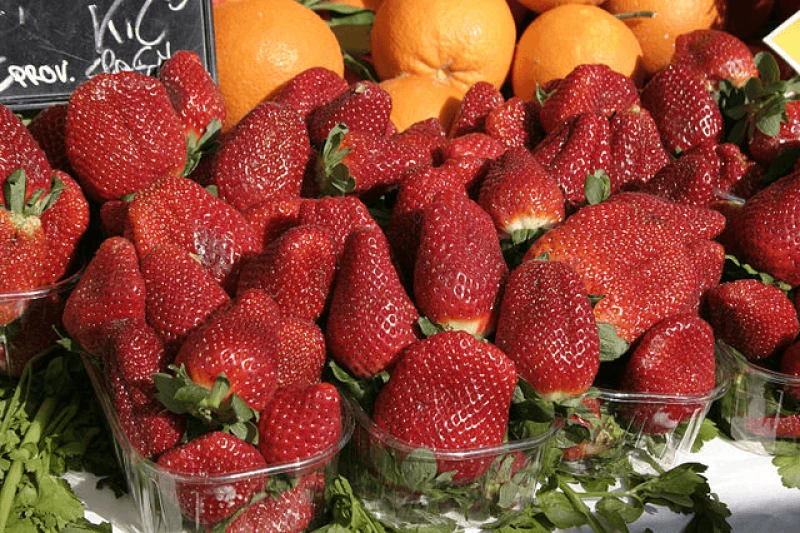Strawberries are often perfectly shaped, humongous and uniform — but the flavor leaves much to be desired. Genetic engineering could change that
Strawberries are often perfectly shaped, humongous and uniform — but the flavor leaves much to be desired. Genetic engineering could change that


Native strawberries have been grown in the British Isles for centuries. But the ones we eat today are the product of centuries of cross breeding, including a mix of North and South American varieties.
But, as in much of the agriculture sector, advances in gene science have given producers new ways of improving their produce.
So [Farmer Marion] Regan, uses genetic markers which can speed up the search for improved varieties.
Genomic informed breeding, she emphasises, is not gene editing or genetic modification but rather looking at the genetic traits of strawberry varieties in order to pick the best ones from which to breed.
Such techniques were given a boost four years ago when scientists mapped the cultivated strawberry genome.
Now, breeders are using this knowledge to grow strawberries with new and improved flavours – even a savoury strawberry.
The knowledge might reverse a trend in recent decades where retailers have prized shape, size and uniformity of fruit and vegetables and neglected flavour.
…
The National Institute of Agricultural Botany (NIAB) says precision breeding could allow us to replace the 59,000 tonnes of imported strawberries with homegrown varieties – that’s almost a third of all strawberries consumed in the UK each year.
This is an excerpt. Read the original post here

 | Videos | More... |

Video: Nuclear energy will destroy us? Global warming is an existential threat? Chemicals are massacring bees? Donate to the Green Industrial Complex!
 | Bees & Pollinators | More... |

GLP podcast: Science journalism is a mess. Here’s how to fix it

Mosquito massacre: Can we safely tackle malaria with a CRISPR gene drive?

Are we facing an ‘Insect Apocalypse’ caused by ‘intensive, industrial’ farming and agricultural chemicals? The media say yes; Science says ‘no’
 | Infographics | More... |

Infographic: Global regulatory and health research agencies on whether glyphosate causes cancer
 | GMO FAQs | More... |

Why is there controversy over GMO foods but not GMO drugs?

How are GMOs labeled around the world?

How does genetic engineering differ from conventional breeding?
 | GLP Profiles | More... |

Alex Jones: Right-wing conspiracy theorist stokes fear of GMOs, pesticides to sell ‘health supplements’




 Viewpoint — Fact checking MAHA mythmakers: How wellness influencers and RFK, Jr. undermine American science and health
Viewpoint — Fact checking MAHA mythmakers: How wellness influencers and RFK, Jr. undermine American science and health Viewpoint: Video — Big Solar is gobbling up productive agricultural land and hurting farmers yet providing little energy or sustainabilty gains
Viewpoint: Video — Big Solar is gobbling up productive agricultural land and hurting farmers yet providing little energy or sustainabilty gains Fighting deforestation with CO2: Biotechnology breakthrough creates sustainable palm oil alternative for cosmetics
Fighting deforestation with CO2: Biotechnology breakthrough creates sustainable palm oil alternative for cosmetics Trust issues: What happens when therapists use ChatGPT?
Trust issues: What happens when therapists use ChatGPT? California, Washington, Oregon forge immunization alliance to safeguard vaccine access against federal undermining
California, Washington, Oregon forge immunization alliance to safeguard vaccine access against federal undermining 30-year-old tomato line shows genetic resistance to devastating virus
30-year-old tomato line shows genetic resistance to devastating virus The free-range chicken dilemma: Better for birds, but with substantial costs
The free-range chicken dilemma: Better for birds, but with substantial costs ‘You have to treat the brain first’: Rethinking chronic pain with Sanjay Gupta
‘You have to treat the brain first’: Rethinking chronic pain with Sanjay Gupta
